During the Edwardian Era it was the style to have larger than head size crowns and also to wear hats high on the head so when making hats how do you keep the hat at the right level on the head? I have several options below to deal with this issue on several different types of hats.
Wireframe
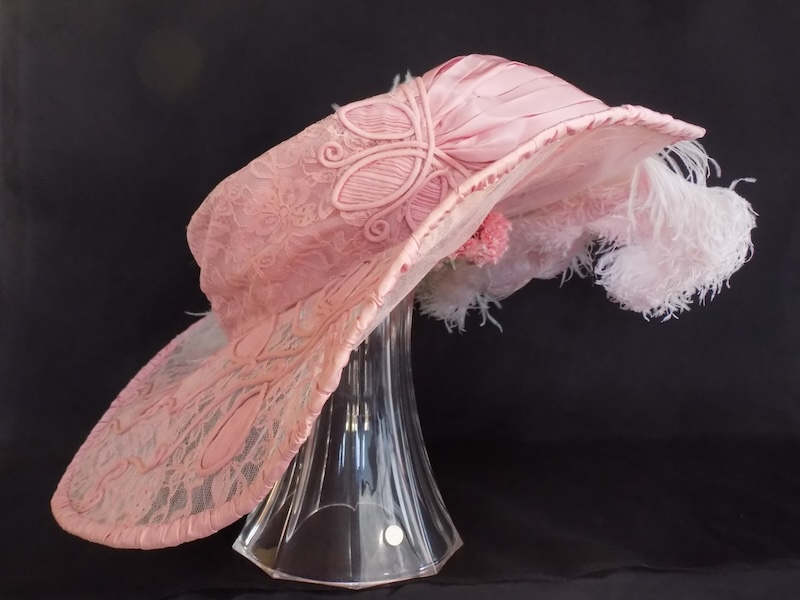
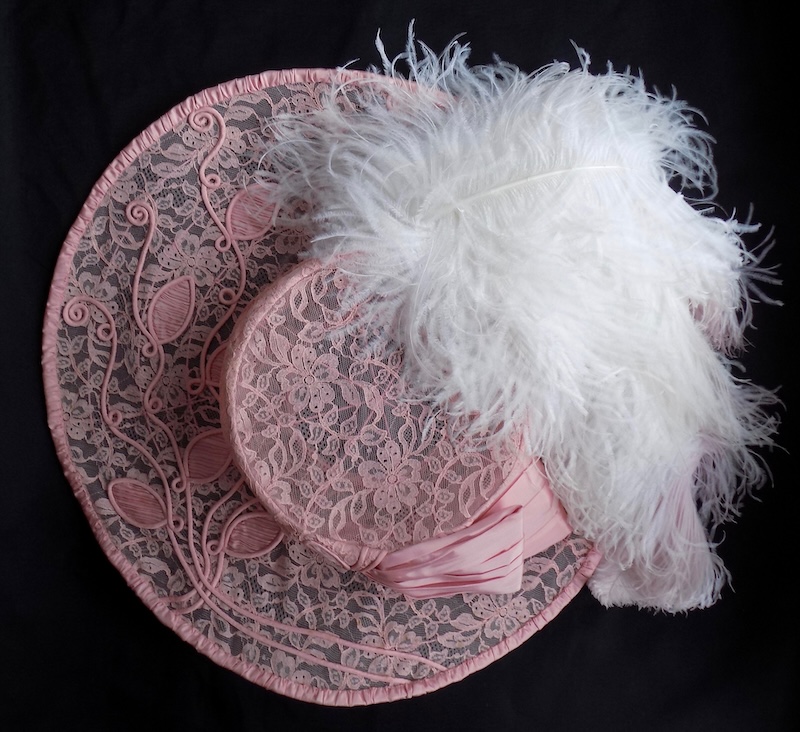
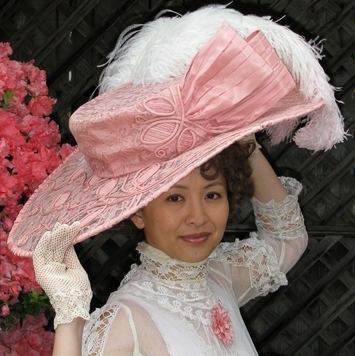
This lace hat has a very large crown. it’s a good example of how the problem was historically solved with wire frame hats. Check out this step-by-step article I did that explained how the crown and the brim were worked separately with only a small hole in the brim frame large enough for the top of her head and bun at most. The hat also has a bandeau that supports the hat at an angle.
Fabric covered straw
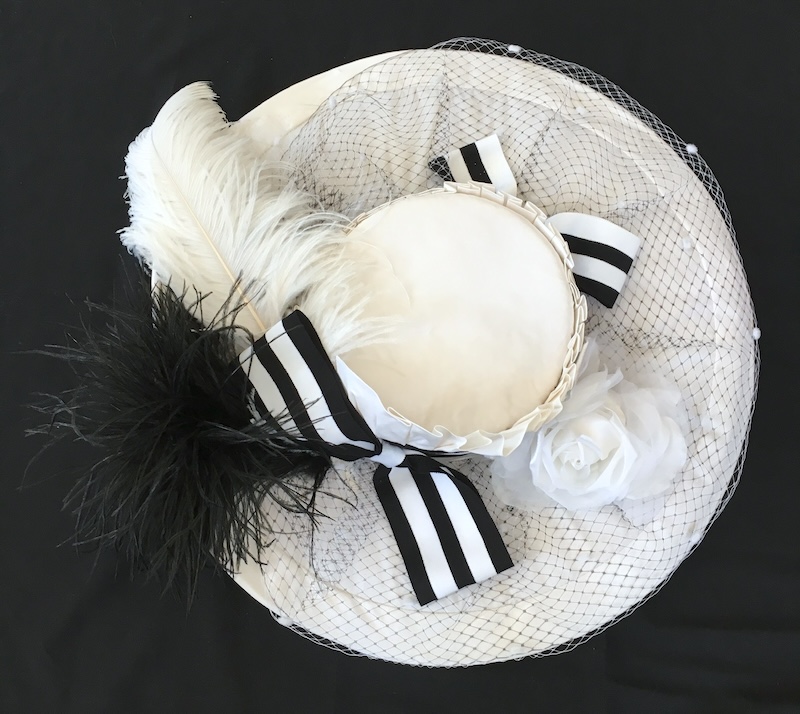
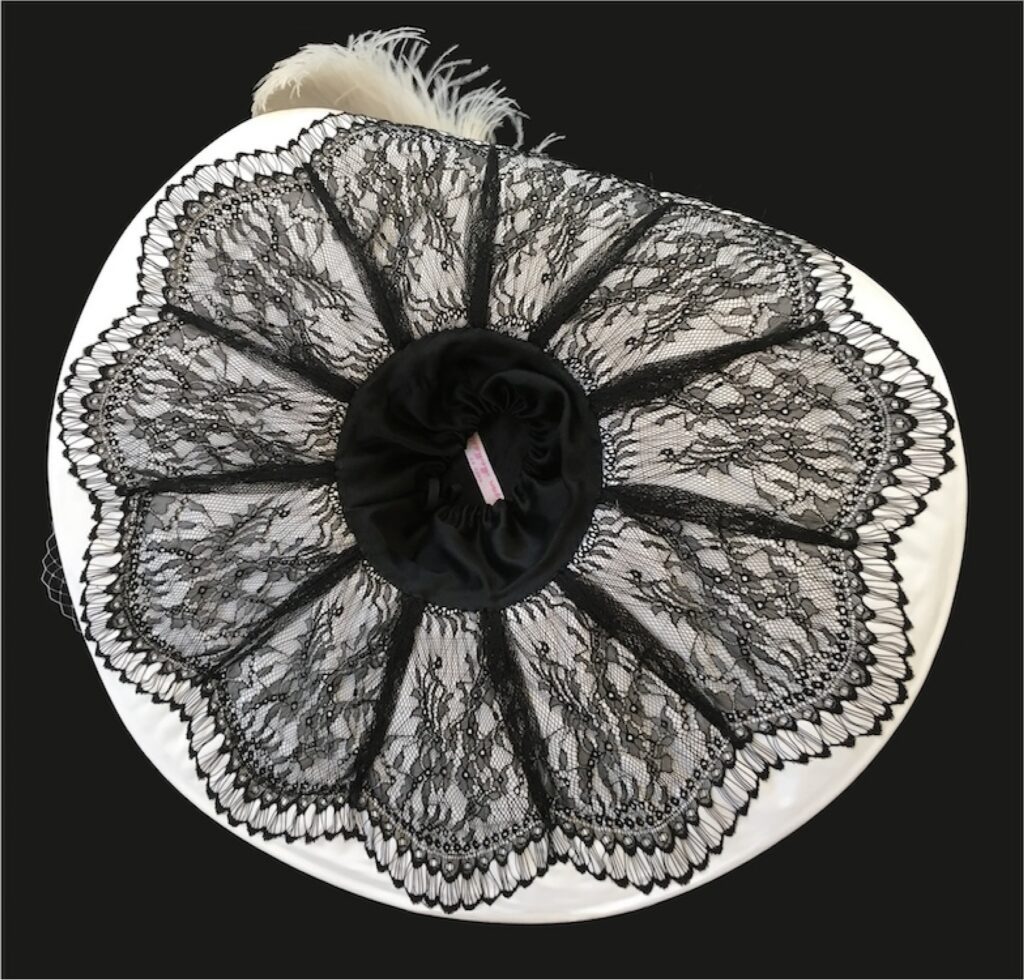
This hat was inspired by a hat worn by Cora in the first season of Downton Abby. As you can see the crown is large but the opening on the bottom (right) is smaller.
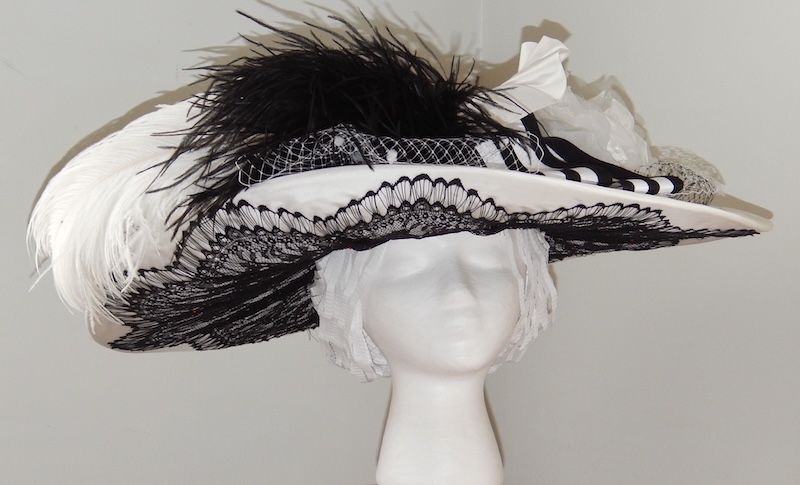
This is how it should sit so that the majority of the forehead shows even though there is some sag in the brim.
In order the have a small opening at the bottom and a large crown and to keep the hat lightweight I had to use two woven straw hats as the substructure. Buckram would have been too heavy. I blocked a small crown in the center of the main straw (right) and added wire and covered it with bias tape.
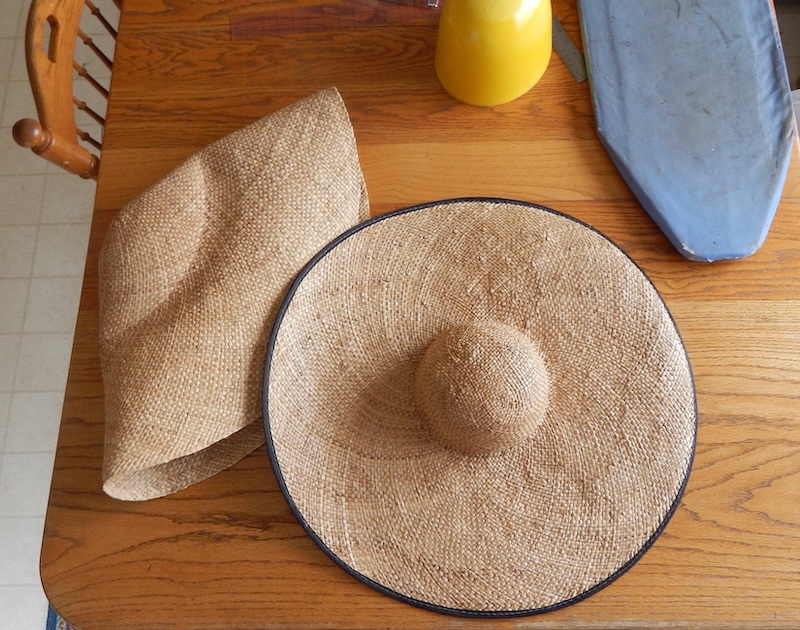
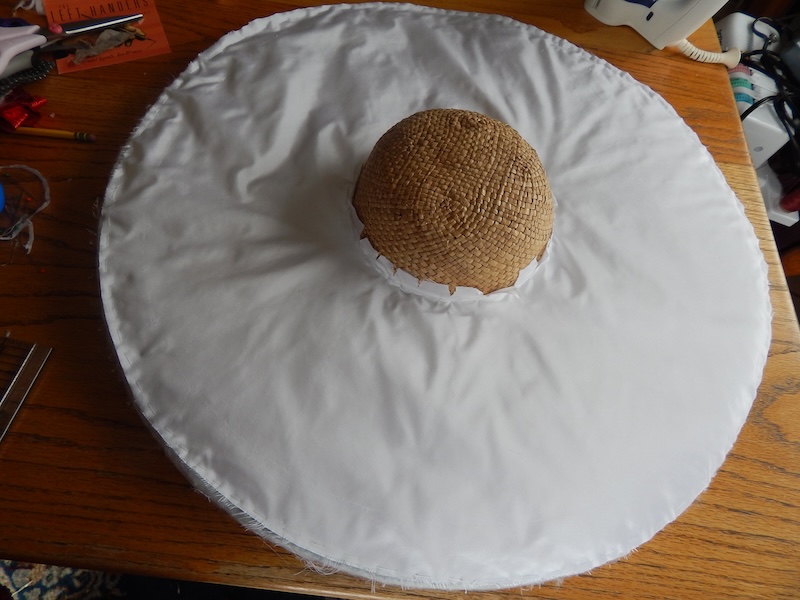
I then could pad and cover the upper brim.
A blocked the second hat over a cardboard block I made from scrap cardboard boxes.
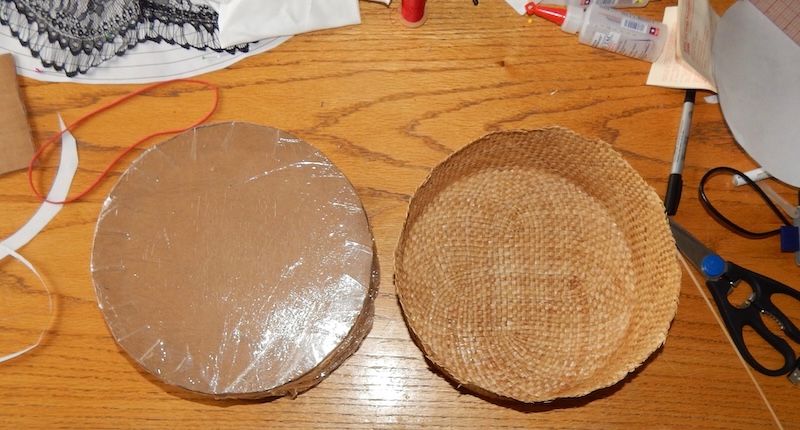
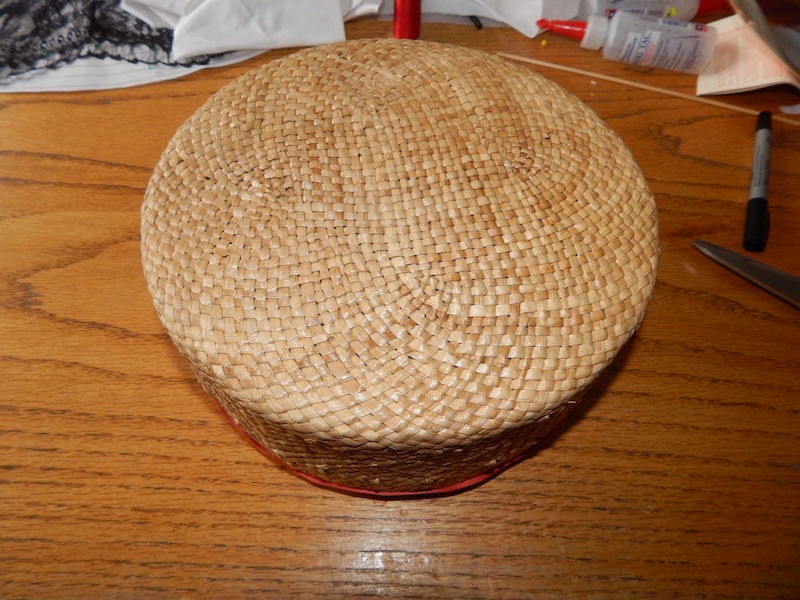
I could add wire to the base of the crown and pad and cover that with fabric before sewing it to the brim. At this point I could finish it off as if it was a single unit.
Another fabric covered blocked straw
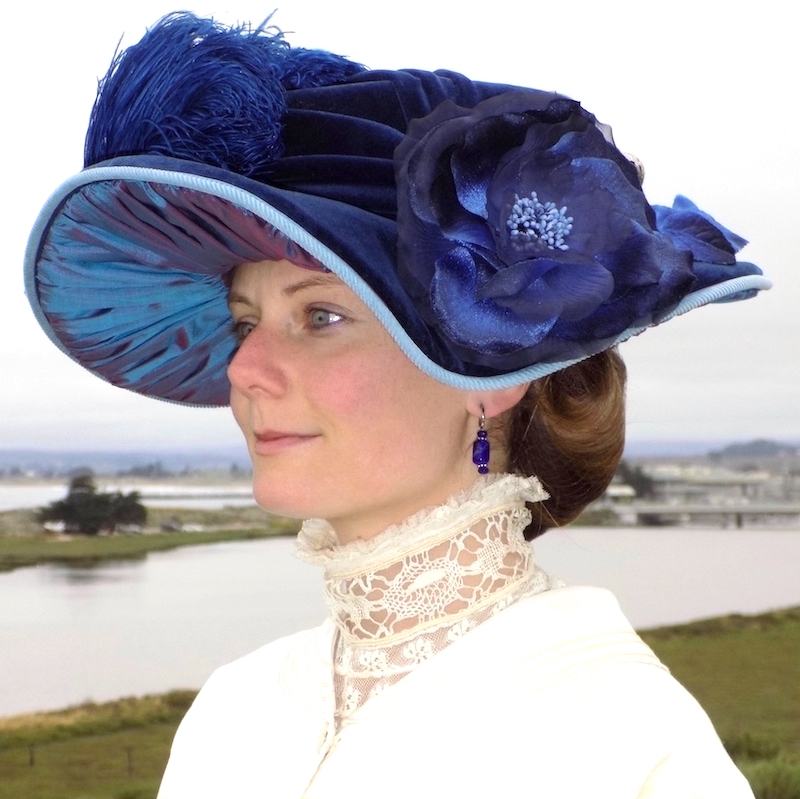

For this large crown Edwardian hat I solved the issue with a different historical method. I added a drawstring lining. Drawstring linings were used in hats for many decades before the Edwardian period but during that period they had a special function, to control just how low your hat would fit down on your head. I have been told that the presents or absence of drawstring lining can tell you if a hat was made before of after WWI, if the style of the hat is in the second decade of the 20th C.
This is the single straw hat that I used for the hat after it has been soaked, sized and stretched over a cardboard block.
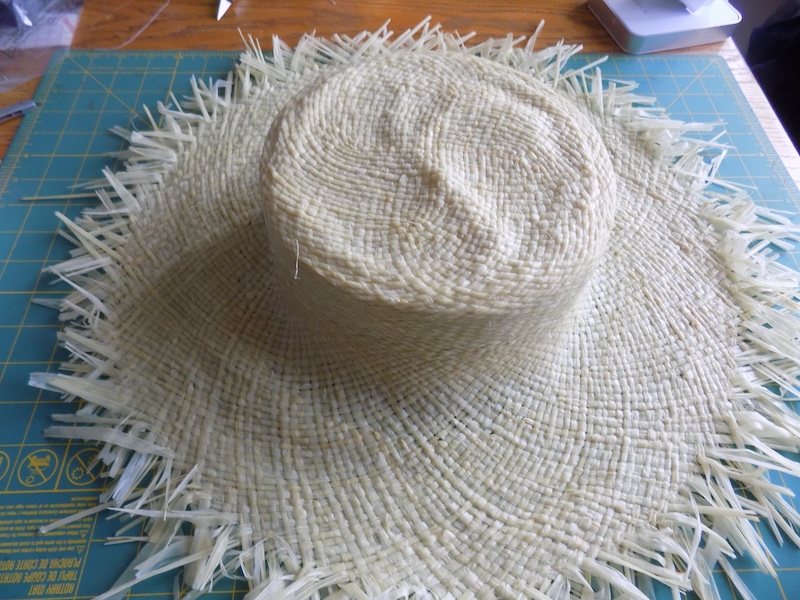
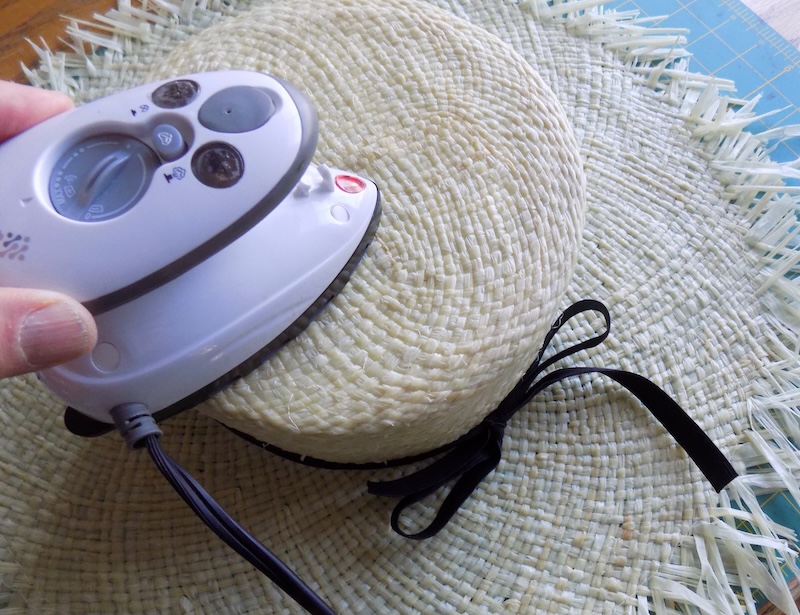
I had to use an iron, some steam and pressure the get the crown tip to flatten out as well as an elastic band to make a sharp angle at the base of the crown.
When it was dry I trimmed the edge and added some wire to the edge. In some ways making a substructure for a hat is faster and lighter than buckram.
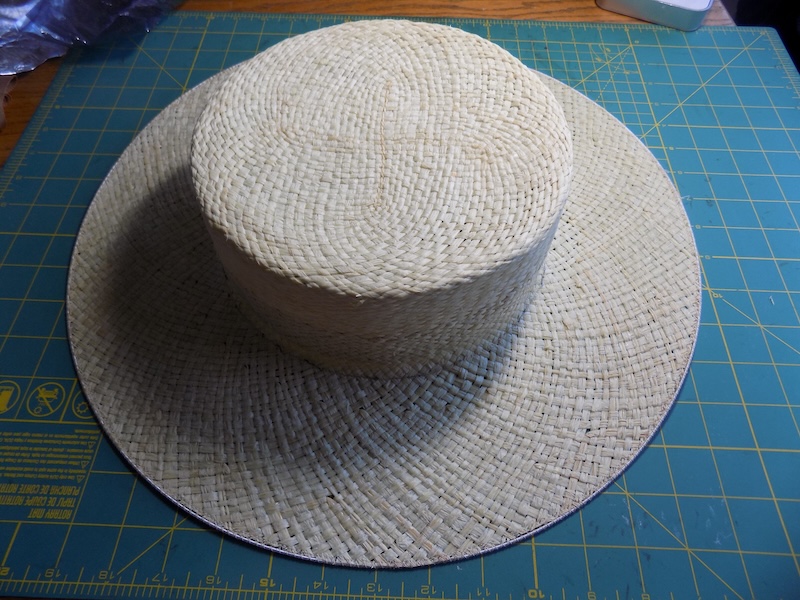
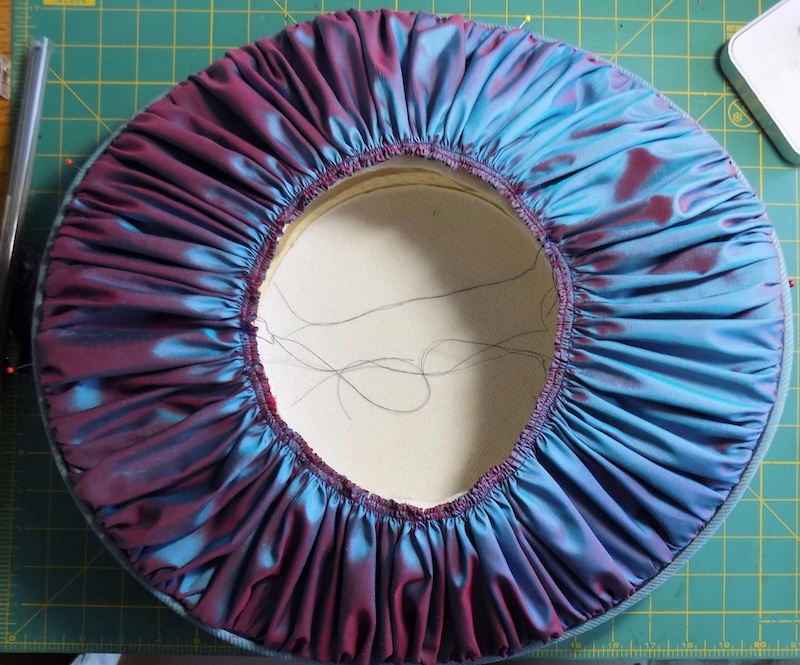
I covered the hat the same way I would cover a buckram hat. I used a gathered under brim so, I slipped the fabric which was the covering for the upper brim the piping on the edge and the gathered under brim as a single piece and then pulled the gathering stitches until everything fit. Once the seam allowance of the gathered fabric were sewn thru the head opening then I was ready for the drawstring lining.
Once I got a measurement of the head opening I could cut an oval for the crown tip and a bias strip of the lining fabric that was that length and ~5″. That width is enough for a hem and a casing for the drawstring.
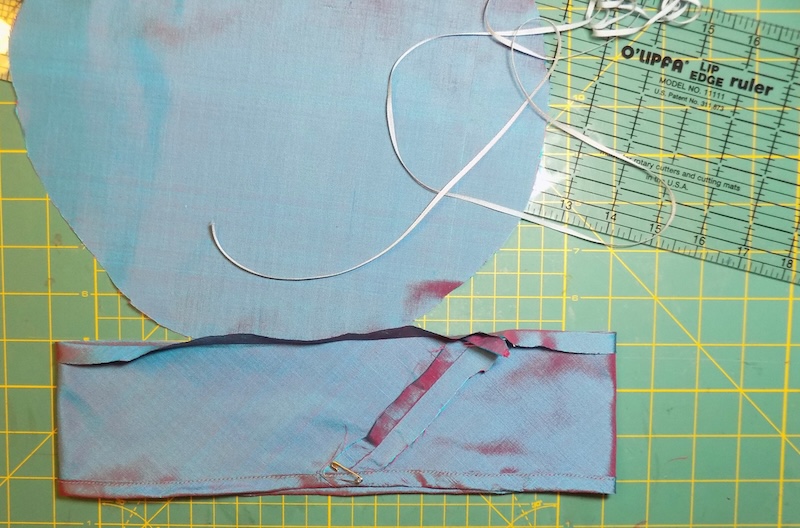
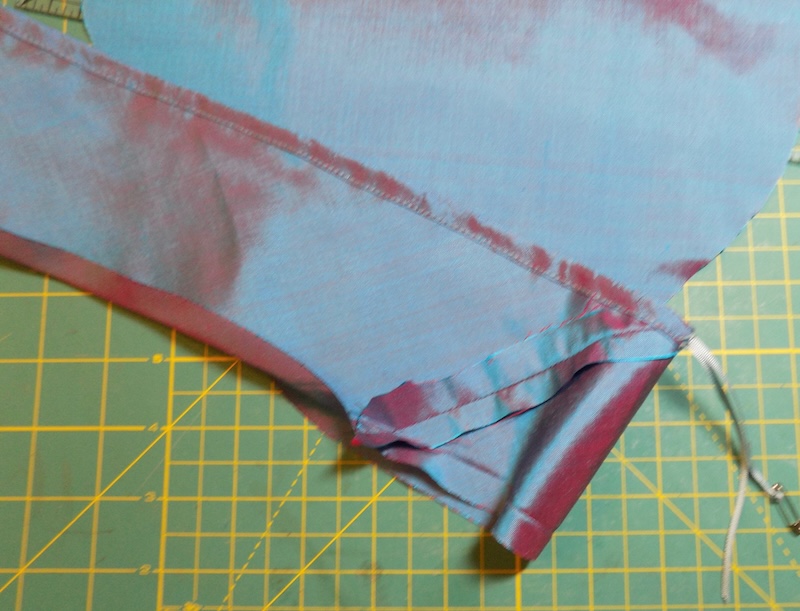
I threaded the drawstring thru the casing.
I glued the oval piece down to the crown tip. I add glue just at the corners then press-smooth the fabric into it.
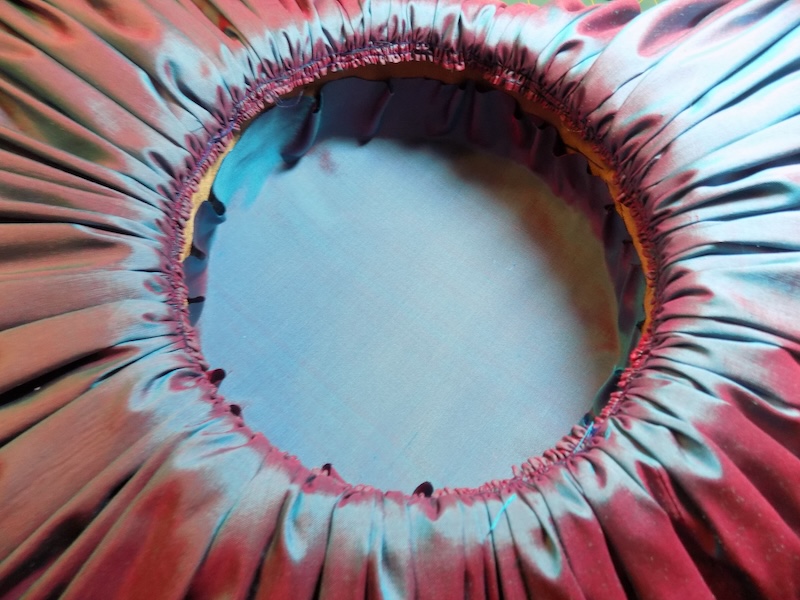

I the pinned the non-drawstring side of the lining sides to the edge of the head opening.
It’s a little easier to sew it in with the drawstring gathered so I did that. Then I whip stitched the edge to the gathered under brim fabric.
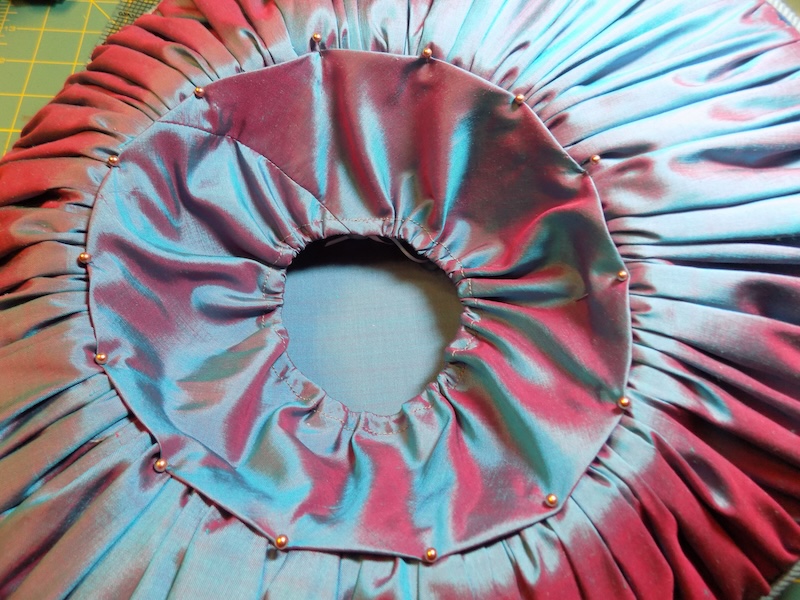
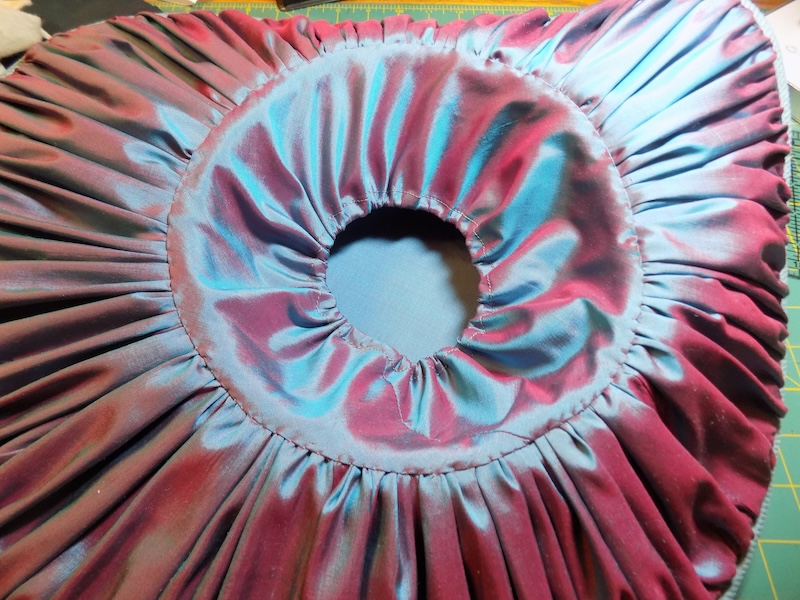
This is what it looked like finished.
This is an example of another Edwardian hat. Boaters were often worn high on the head as “perchers” so drawstring linings were really important even though they did not always have oversized crowns.
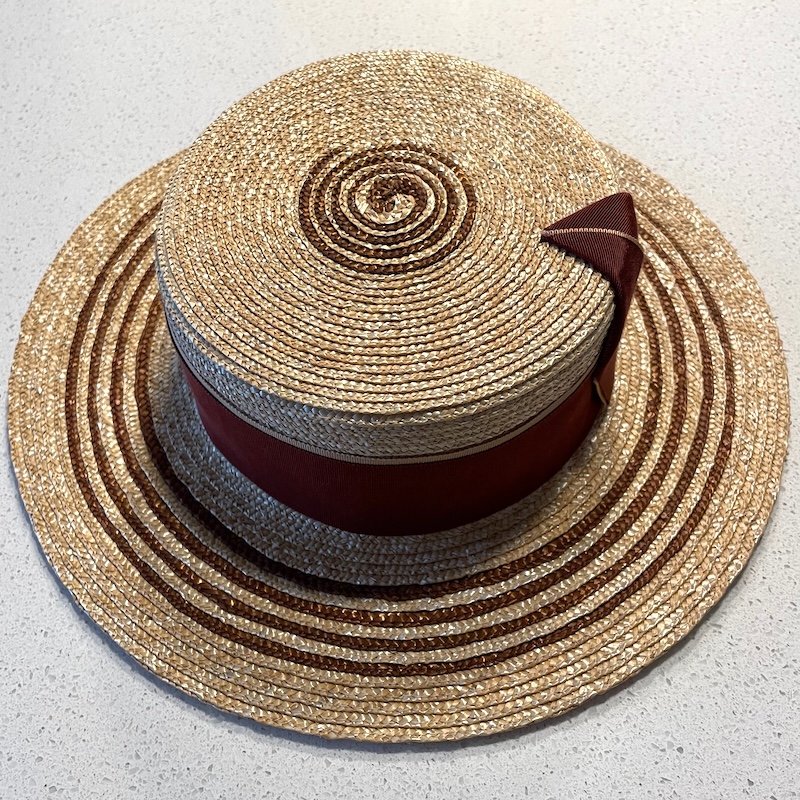
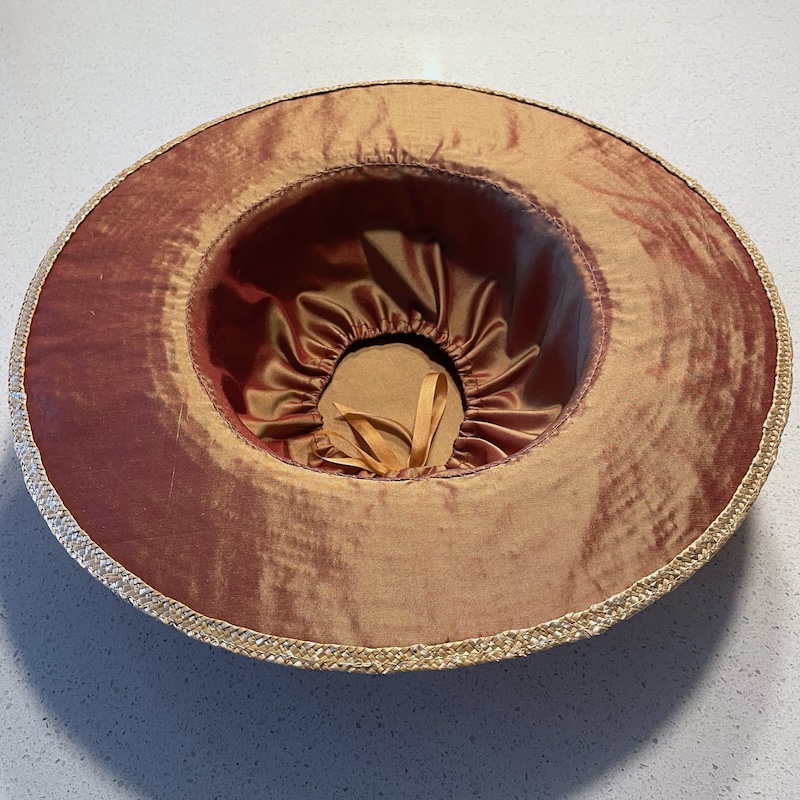
In this picture you can see the tie. You would be able to un-tie it to adjust the level of fit to your hairstyle.